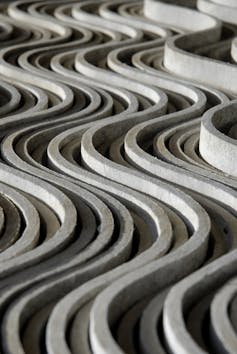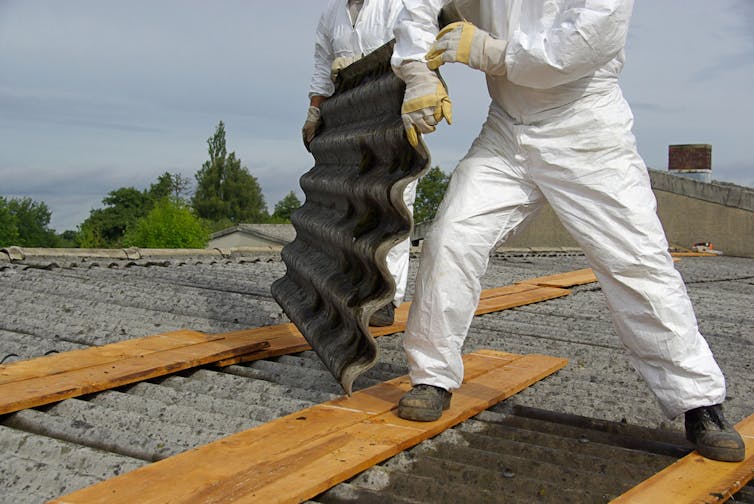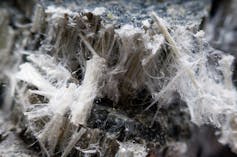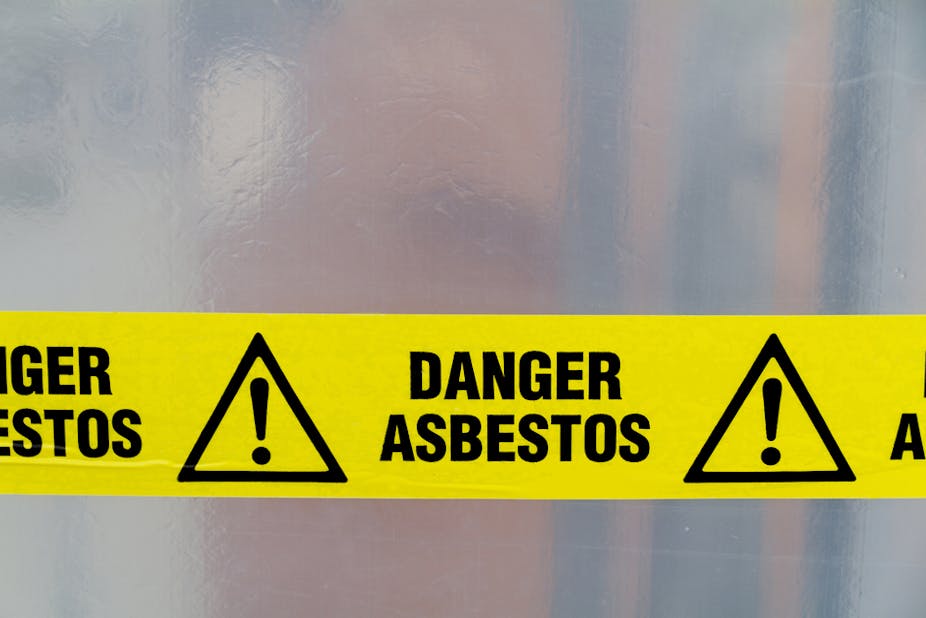The digital age crashed into the bronze age when the roll out of Australia’s high-speed broadband network was disrupted by the discovery of asbestos in Telstra pits in recent weeks.
Workplace relations minister Bill Shorten is expected to introduce a bill to parliament later today to set up national registry for residents and contractors exposed to asbestos as a result of this work. In light of the strong link between asbestos exposure and lung cancer, the register is a sensible first step in managing the health risks associated with exposure to asbestos.
What is asbestos?
Asbestos is a naturally occurring mineral which humans have been mining for more than 4,000 years, principally for its fire-retardant properties.
Mining and production of asbestos increased substantially from the end of the industrial revolution in the middle of the 19th century, eventually peaking in the middle to late 20th century. By then asbestos was being used as a component in hundreds of everyday products such as building materials, brake linings, fuse-boxes, and pipe insulation.
Health harms
Exposure to even a single fibre of asbestos dust can cause significant health problems. Every one of the six variations of the fibrous silicate minerals known collectively as asbestos have the potential to cause malignant lung cancers, mesothelioma, pleural plaques (calcification of the lungs), or asbestosis (pneumoconiosis, a type of lung disease).
Already in Australia asbestos diseases account for at least 3,500 deaths every year. That rate is predicted to rise until about 2020, with current estimates suggesting 40,000 Australians eventually will die. And it’s likely these statistics will be an under estimate.

Asbestos diseases often take decades to manifest following exposure and many individuals may not even know they have been exposed. Once manufactured, asbestos can be difficult to recognise. It can be shaped and painted and so it often looks like other types of building materials.
Most problematic is that unlike, say, nuclear waste, asbestos does not have a half-life. It can be left alone for a few decades or for 30 generations and when it is disturbed it represents exactly the same health threat as it did when it was originally mined.
Changing demographics
Those characteristics are now having impact. Asbestos diseases were once a blue-collar affliction, affecting mainly men, often decades after exposure. Increasingly, younger DIY builders and women are presenting after, often unknowingly, they’ve encountered asbestos during home renovations, or after it’s been dumped on the footpath or in a skip.
While television renovators lustily knock down walls to rebuild a whole house in a day or a week might have had their own work sites checked for risk, drilling a hole to hang a picture at home, or having the kids build a cubby out of waste from the vacant block next door can be a risky proposition.
Not a home renovator? Even disaster zones pose potential threats after bush fires, floods and storms.
The best way to handle asbestos is not to handle it. There are experts who can inspect buildings and homes for asbestos and manage its removal. Various government agencies both state and federal have been equipped to manage the issues associated with the discovery of asbestos.
A good place to start is the environmental health officer at your local municipal council. Safe Work Australia also has published guidelines about who can remove asbestos and how that must be done. It might seem excessive but if asbestos could be in your home or neighbourhood, call an expert.

Time for a national registry
Anyone exposed to asbestos in their workplace, home, or within the community is at risk of developing an asbestos-related disease. By the time the illness manifests, up to 50 years later, the world will have changed: buildings will have been demolished and businesses closed; the names of former colleagues, neighbours and witnesses long forgotten.
Australia has no systematic procedure for recording who has or may have been exposed, how exposure took place, or for monitoring their health.
Compensation depends on where and how exposure occurred. For those exposed in the workplace, compensation in the form of weekly payments is governed by the state workers’ compensation scheme. Injured workers can also use the common law to seek damages from former employers thanks to the legal actions of former James Hardie employees.
For the increasing numbers of people exposed to asbestos in the home or within the community there is no home- or community-based equivalent of workers’ compensation. Common law damages are also problematic with issues of causation and knowledge of risk providing significant obstacles.

We are starting to build the big picture. Buildings posing potential asbestos-related health risks can now be tracked via the National Asbestos Register. The Australian Mesothelioma Registry collects data on all new cases of mesothelioma and information on past exposure. The Australian Workers Union’s National Asbestos Register contains details of more than 6,000 people previously exposed to asbestos in the workplace.
All three initiatives are important but are not enough. A national register of everyone exposed to asbestos, whether at home, in the community, or at work is needed to inform the state and federal policies required to deal with the legacy of asbestos in Australia.

